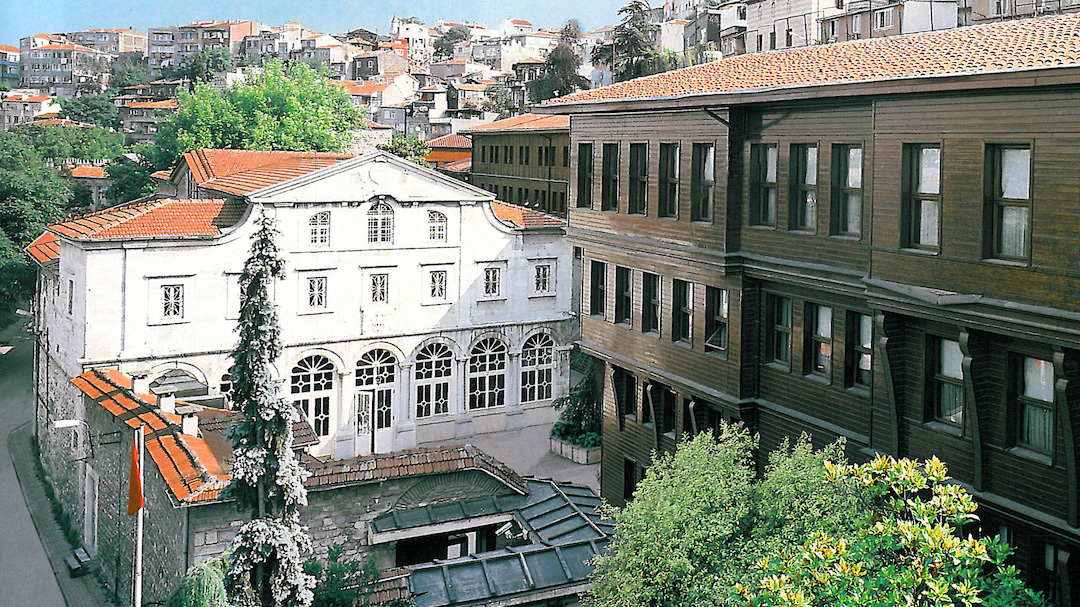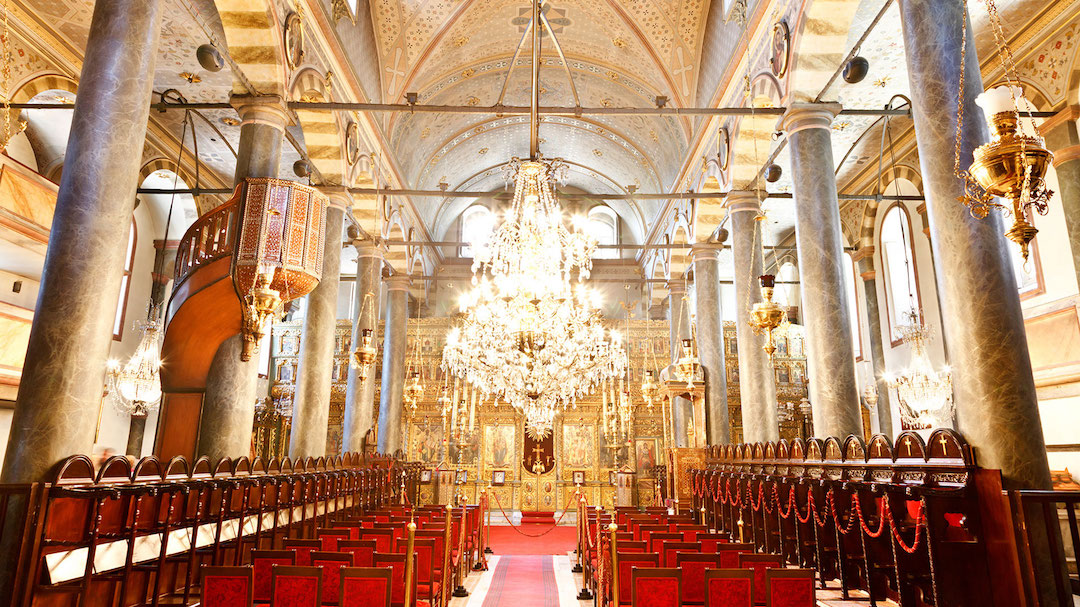Istanbul ‘s Lesser-Known Attractions
Introduction
Istanbul Lesser-Known Attractions – Istanbul ‘s reputation precedes it, and the same is true with some of its most notable sights: the Hagia Sofia, the Grand Bazaar, Topkapi Palace, the Blue Mosque, Basilica Cistern…the list goes on. At the same time, there’s so much going on in this city, and its history and heritage are so extensive, that even the “lesser-known” attractions are still world class. Here are a few examples.
Istanbul Beylerbeyi Palace

The Asian side of Istanbul is not usually what people think of in terms of sightseeing, but there are a few treasures hidden in this part of the city. Located right by the Bosphorus, the beautiful Beylerbeyi Palace was the former summer home of the sultans. Also serving as a temporary residence for visiting foreign dignitaries, the three-floored palace has all those lavish Bohemian crystal chandeliers and porcelain vases from China as expected from the Ottoman royal aesthetic
Istanbul Rüstem Paşa Mosque

Navigate the warren of narrow streets west of Istanbul’s Egyptian Spice Market to find a twisting, dark staircase that leads to a truly stunning place of worship. Built by the great Mimar Sinan for Sultan Süleyman the Magnificent’s grand vizier in 1563, this seldom-visited mosque is embellished with stunning blue Iznik tiles whose beauty rivals that of the better-known 17th-century Sultan Ahmet Mosque (aka, the Blue Mosque).
Küçüksu Kasrı

Another gem on the Asian side of Istanbul, the small Küçüksu Kasrı (Küçüksu Palace) was used by sultans during their country excursions and hunting trips. With a neo-baroque style, the palace is decorated lavishly with fireplaces of Italian marble and antique European furniture. Completed in 1857, the small yet beautiful palace was converted into the state’s guesthouse after the establishment of the Turkish republic, later becoming a museum.
Kasımpaşa and Bomonti food markets

Istanbul is filled with street markets, but two stand out. The Kasimpasa market on Sunday mornings is on a small street and sells a limited but unusual selection of meats, fruits, vegetables, and fungi grown in the Black Sea region’s Kastamonu province — they’re driven 300 miles through the night to Istanbul by the vendors. The other is the Bomonti organic market, where you can find heirloom everything and enjoy high-brow conversations with local intellectuals over freshly cooked gözleme. See also Istanbul Flea Markets.
Yavuz Selim Mosque

This imperial mosque is located right on Istanbul’s fifth hill, overlooking a beautiful view of the city from the Golden Horn onward. Dedicated to the memory of Selim I, his son Suleiman the Magnificent commissioned the religious edifice in the 16th century. The courtyard features an ablution fountain as well as curved domes that hide intricate patterns composed of hand painted tiles.
Haydarpaşa Railway Station

Haydarpaşa Station is one of the most important symbols of Istanbul since its opening in 1908. The neoclassical Haydarpaşa Stationbuilding, a gift to the Sultan from Kaiser Wilhelm II, was built by the Anatolia-Baghdad Corporation between 1906 and 1908. Its foundation is 1100 wooden piles, each 21 meters (69 feet) long, driven into the mushy shore by steam hammer. Haydarpaşa was an important link in the railway chain of the Kaiser’s Berlin-to-Baghdad railway scheme, part of the German Empire’s strategic Drang nach Osten (“Drive to the East”) during the later 19th century. Gar was badly damaged by the fire in 2010. Due to the Marmaray Project, train services were stopped in 2012. Garda has been undergoing restoration work for years. Now those studies are largely completed. Haydarpaşa Train Station will open its doors to its passengers just like before. Priority will be given to high-speed trains, and the remaining capacity will be used for long-distance trains.
Perili Köşk

Under the second Bosphorus bridge is the fanciful Perili Köşk, translating to “Haunted Mansion,” which was built in 1911 for a pasha. While its London-style red-brick walls and conical turret could feature in a horror movie, its nickname comes from the years it stood unfinished after most of the empire’s skilled craftsmen were drafted to fight in World War I. Work on its nine floors was completed almost a century later, and the mansion now serves as a corporate headquarters that opens its office space — which houses the Borusan Contemporary art collection, featuring both permanent and temporary exhibits — to the public on weekends.
The Ecumenical Patriarchate

The seat of world Orthodoxy and home to the 270th successor of the Apostle Andrew is a surprisingly humble complex of buildings in the Golden Horn neighborhood of Fener. The 17th-century Church of St. George’s magnificent gold-leaf altar bears important icons, and relics of major saints rest in the cathedral’s narthex. Since the fall of the Ottomans, the Greek population of Istanbul has largely emigrated, so today the church is more of a symbolic center for the Ecumenical Patriarchate than anything else. But the spiritual leader of the world’s 300 million Orthodox, Bartholomew I, continues to hold services here, and Orthodox Christians from Greece and across Eastern Europe stream through the church as pilgrims. Stop for a rest in the pleasant garden full of friendly cats.
The shrine of Zoodochus Pege (Balıklı Rum Kilisesi)

Several Greek Orthodox patriarchs are buried in the inner courtyard of this ornate monastery, a popular shrine and pilgrimage site since early Byzantine times. It’s one of many Greek Orthodox churches found around Istanbul that were established at the site of a sacred underground spring. The fish inhabiting the spring here are said to have arrived as a miracle following the fall of Constantinople (hence the monastery’s name, which translates to “Church of Fish”). Most interesting is the outer courtyard bearing old tombstones inscribed in Karamanli — Turkish written using the Greek alphabet.
The Patriarchal Church of St. George

The church of St. George (the Great Martyr and Trophy-Bearer) is the fifth church in Constantinople to house the Ecumenical Patriarchate since the 15th century. Formerly a convent for Orthodox nuns, it was converted to the patriarchal offices by Patriarch Matthew II (1598-1601). Patriarch Timothy II refurbished the church in 1614 (see inscription on main façade), and Patriarch Jeremiah III rebuilt it after a fire in 1720 (see inscription over right entrance). It was repaired in 1836 by Patriarch Gregory VI and restored recently under Patriarch Bartholomew. The church of St. George is divided into vestibule, nave, and altar and retains the traditional basilica style with three aisles. The vestibule contains icons of St. George and the Prophet Elijah, who is wearing fur in memory of the furrier merchants who brought a water system to the Phanar.
Kuzguncuk District

A stroll down the main street of Kuzguncuk, a former fishing village on the Asian shore of the Bosphorus Strait, offers a glimpse of the ethnic tapestry that was Istanbul a half century ago. Two synagogues, three Greek Orthodox churches, two mosques, and an Armenian church are crammed into this tiny neighborhood of 19th-century wooden houses; it’s now home to art galleries and the ateliers of artists, artisans, and architects.
Istanbul Land Walls

The former land walls that protected the Byzantine Empire are one of the most overlooked historic sights in Istanbul. These land walls protected Constantinople during the reign of Byzantine emperor Theodosius II in the fifth century, until 1453 when the Ottomans took over the city. Even though it’s a bit difficult to trace the entirety of the walls, one of the best preserved parts is the Yedikule Fortress, which is accessible by train (Yedikule stop).
Ruhban Okulu

This was the main School of Theology belonging to the Eastern Orthodox Church’s Ecumenical Patriarchate of Constantinople until 1971, when a parliamentary law banning private higher education institutions forced its closure. However, wandering the old halls and serene garden of Ruhban Okulu (the Halki Seminary) is still an undeniably unique Istanbul experience, especially when you get to see the view from its top-of-the-hill location.
Mısır Apartmanı’s contemporary art galleries

Among the grandest buildings on İstiklal Avenue, the art-nouveau Mısır Apartment was built for the Khedive of Egypt as a winter residence in the early 1900s. Today, it’s a one-stop address for a half-dozen contemporary art galleries. Traipse down the hill to Boğazkesen street for several more art spaces, which connects with Karaköy district, where even more galleries have cropped up. You might not have previously associated Istanbul with incredible art of the non-architectural variety — now you know better.
Related Readings
- A Maze to Amaze : Istanbul
- Istanbul City Breaks
- Istanbul Public Transportation
- Istanbul Guide
- Istanbul Walking Tours










